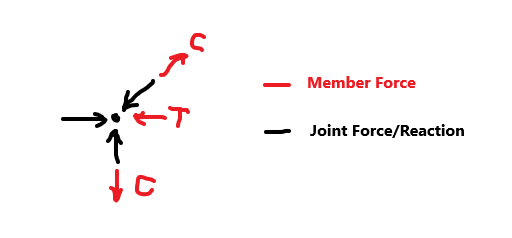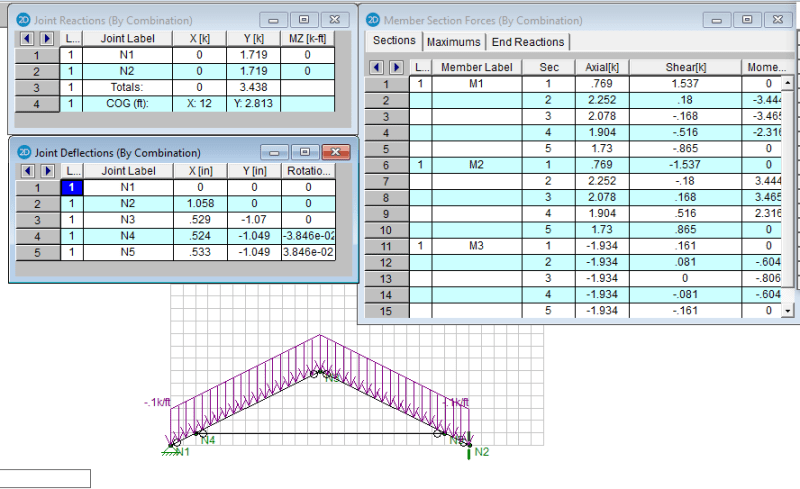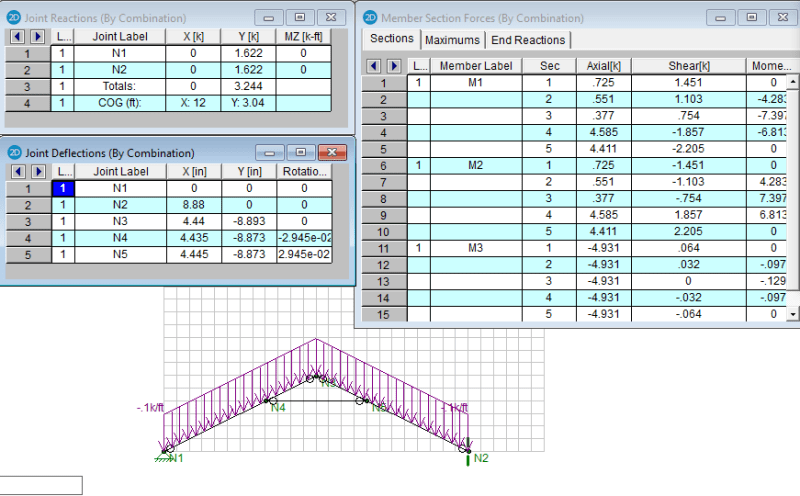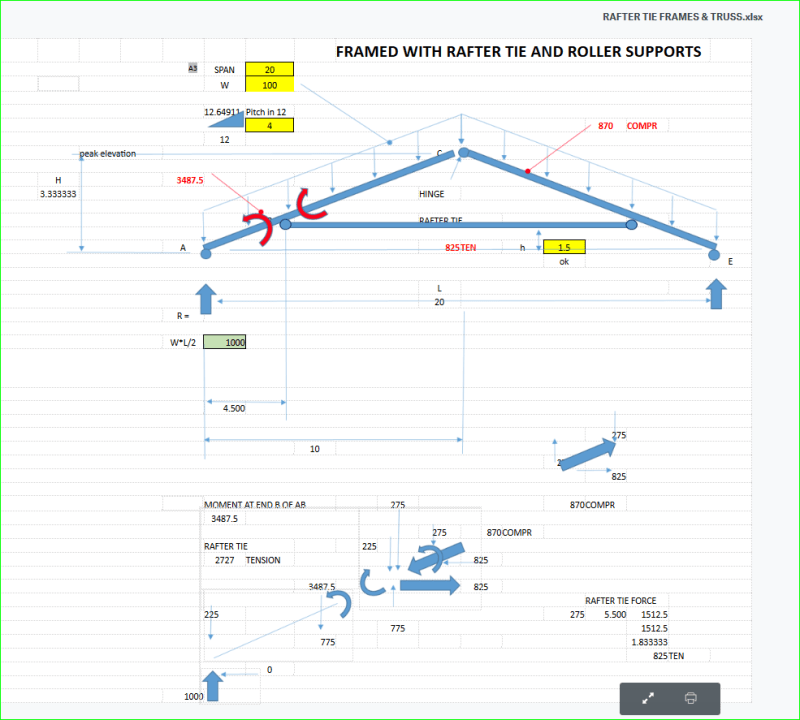Hi everyone,
I'm analyzing the TFEC Bulletin No. 2018-12 "Behavior of statically determinate and indeterminate rafters". If I use a collar tie (or strut) system (with no horizontal reaction at the bottom of the rafter)can I assume there will actually be NO horizontal force at the wall top plate? I know that collar ties should not be used to carry the thrust, but struts yes (located higher than top plate level in this case).
I am not sure what situation occurs in a real life. I can't assume that the rafter has no thrust at the bottom, since it is resting on the wall plate and is always notched/nailed/connected.
What do you usually do in such situation? That assumption determines a wall design and how much thrust it will carry.
Thanks,
I'm analyzing the TFEC Bulletin No. 2018-12 "Behavior of statically determinate and indeterminate rafters". If I use a collar tie (or strut) system (with no horizontal reaction at the bottom of the rafter)can I assume there will actually be NO horizontal force at the wall top plate? I know that collar ties should not be used to carry the thrust, but struts yes (located higher than top plate level in this case).
I am not sure what situation occurs in a real life. I can't assume that the rafter has no thrust at the bottom, since it is resting on the wall plate and is always notched/nailed/connected.
What do you usually do in such situation? That assumption determines a wall design and how much thrust it will carry.
Thanks,




